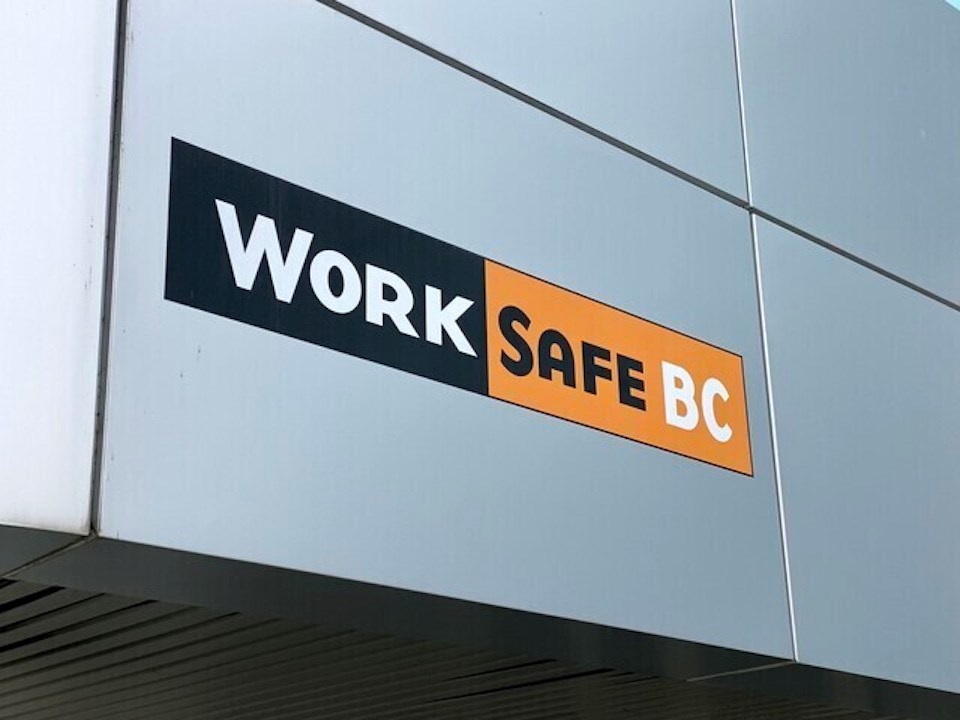B.C.’s Workers’ Compensation Board has a conundrum most would envy: what do you do with $2.7 billion?
For now, the province’s Ministry of Labour says: Nothing.
Over the past 10 years, WorkSafeBC has built up a massive surplus thanks to investments and steady premium payments from businesses.
Labour Minister Harry Bains describes it as a fiscal triumph that has helped WorkSafeBC keep costs steady even as it improves services for injured workers.
But businesses and labour groups are jockeying to have the money spent elsewhere.
Groups like the Canadian Federation of Independent Business argue the size of the surplus is proof their members are paying too much and are owed a rebate.
Unions, meanwhile, say WorkSafeBC’s surplus could be put to work supporting workers injured on the job, many of whom they say continue to slip through the cracks.
“That is what that money is there for. Some investment into improving the system for workers is urgently needed,” BC Federation of Labour president Sussanne Skidmore said.
Accidentally well-funded
WorkSafeBC is the province’s workers’ compensation board. It is funded by premiums paid by businesses based on the size of their payroll and the rate of workplace accidents in their sector.
The board is the result of a “historic compromise” that is more than a century old. Businesses agree to fund the board; in exchange, workers cannot sue a company directly for an injury sustained on the job.
Instead, the board pays workers for lost wages, health-care benefits and lifetime disability payments.
It administers those payments through the “accident fund,” a big pot of money that funds current and ongoing obligations to injured workers.
It invests that cash in a mix of assets like stocks and bonds. And in recent years, the return on those investments has surpassed expectations.
Normally, WorkSafeBC aims for the value of the fund’s assets to be 30 per cent higher than its liabilities, for a total target of 130 per cent. It’s a big cushion — the largest used by any compensation board in Canada.
But the fund has still exceeded it. Last year, its funded ratio was 146 per cent. The year before, it was more than 154 per cent. In total, the accident fund’s value has sat above the 130 per cent threshold for seven consecutive years.
But Emily Boston argues that fiscal success isn’t necessarily something to celebrate.
“A surplus shouldn’t happen every year, especially when their targeted funding level is that high,” said Boston, a policy analyst with the Canadian Federation of Independent Business.
The CFIB is among employer groups that have lobbied for WorkSafeBC’s board to return some of the surplus to employers in the form of a rebate, which Boston said would help firms weather tough economic times without endangering the stability of the fund.
“The safety and well-being of employees is the top priority for small-business owners. What they just don’t want to see is diligently paying their dollars into a fund that just sits there,” Boston said.
Greg Kyllo, the labour critic for the BC United party — formerly the BC Liberals — says he also wants government to explore a rebate, something that would require legislation.
“We need to think about the other side of the equation,” Kyllo said. “At some point, businesses are just going to go down and close their doors.”
But Bains says the idea is a non-starter.
He says employers are already getting a deal because WorkSafeBC’s surplus lets it keep premium rates artificially low. A briefing note prepared for Premier David Eby earlier this year estimates the board spent $1.7 billion on subsidizing payments for employers from 2019 to 2023 alone.
“They’ve been getting discounts since 2006. If you add that up, it’s billions of dollars,” Bains said.
“The employers are benefiting as a result of the surplus, and at the same time the workers are getting their benefits improved. This is a win-win situation,” he said.
Skidmore agrees the money shouldn’t be given to employers. And she noted the surplus, while substantial, could still be vulnerable if there is a recession. “It’s always better to have some money in the bank, especially when we’re talking about things like workers’ health and safety,” she said.
But the federation and other labour groups also want more aggressive spending to improve compensation for workers injured on the job.
In the early 2000s, the BC Liberal government made dramatic cuts to WorkSafeBC’s payouts to injured workers. It capped lifetime disability payments at age 65. It also changed payments so they would grow at an interest rate lower than the rate of inflation, meaning beneficiaries would get less and less spending power over time. And they reduced how often payments were adjusted to reflect the cost of living.
One 2018 report found those changes “increased the share of the financial burden of work-related injury, disease and death to workers, their families and the greater community, including taxpayers through the increased externalized costs to the social welfare system.”
The BC NDP has reversed some of those cuts. Last year, Bains tabled a bill that included a one-time cost of more than $1 billion to reverse the change made to the interest rate policy.
But the government has yet to restore the lifetime pensions, Skidmore said. The federation has also called for a raft of other changes, including better return-to-work policies, better coverage for psychological injuries and stronger enforcement of existing rules.
“The Workers’ Compensation Board is doing what they can within the current, existing legislation, which falls short of where we would like to see it go,” Skidmore said.
Bains did not say if he has any immediate plans to increase WorkSafeBC’s expenditures. He said government continues to look at the 2019 review of the workers’ compensation system by retired labour lawyer Janet Patterson, which included a raft of recommendations around how it could change.
But he also said the government would move cautiously. “With market volatility, we always need to be very, very careful,” Bains said.



